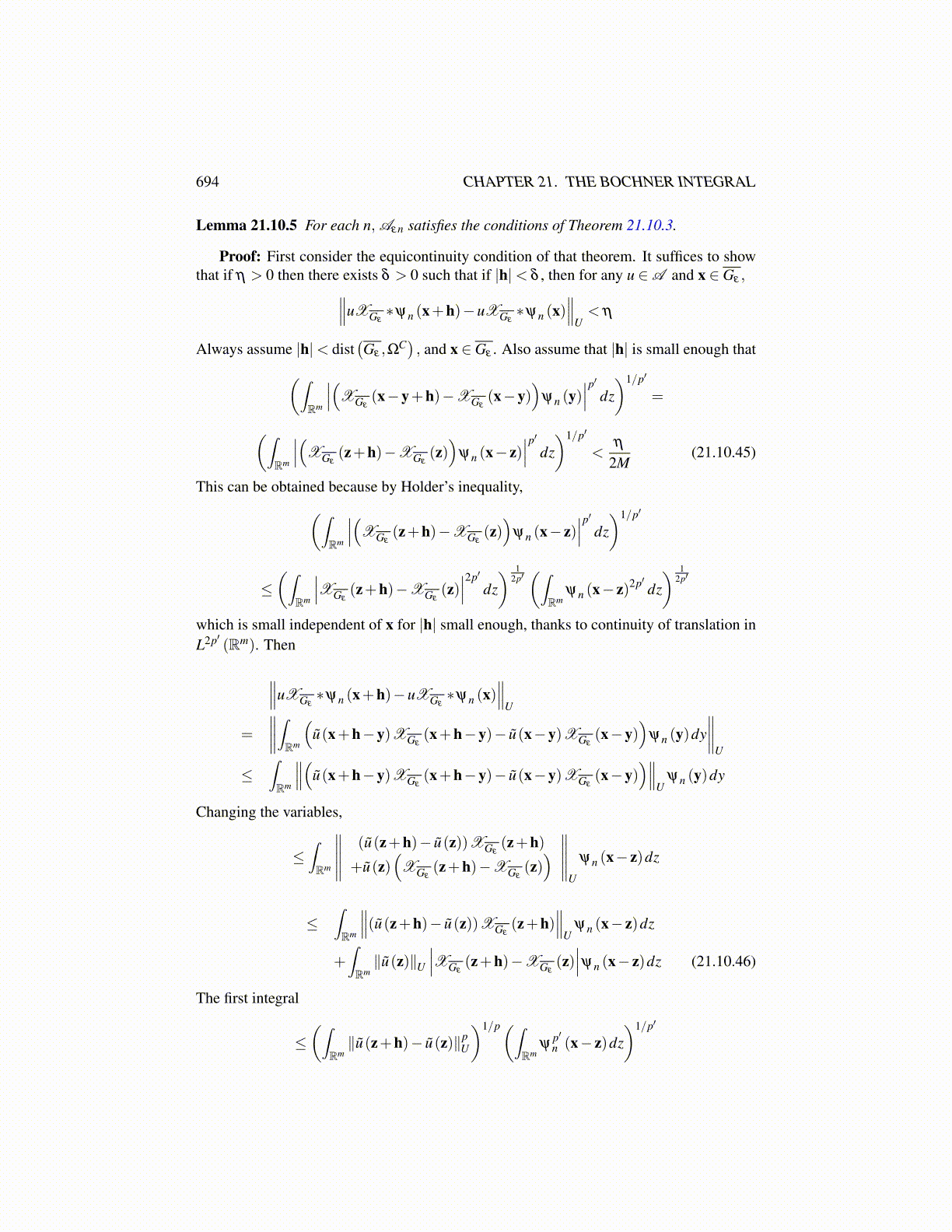
694 CHAPTER 21. THE BOCHNER INTEGRAL
Lemma 21.10.5 For each n, Aεn satisfies the conditions of Theorem 21.10.3.
Proof: First consider the equicontinuity condition of that theorem. It suffices to showthat if η > 0 then there exists δ > 0 such that if |h|< δ , then for any u ∈A and x ∈ Gε ,∥∥∥uXGε
∗ψn (x+h)−uXGε∗ψn (x)
∥∥∥U< η
Always assume |h|< dist(Gε ,Ω
C), and x ∈Gε . Also assume that |h| is small enough that(∫
Rm
∣∣∣(XGε(x−y+h)−XGε
(x−y))
ψn (y)∣∣∣p′ dz
)1/p′
=
(∫Rm
∣∣∣(XGε(z+h)−XGε
(z))
ψn (x− z)∣∣∣p′ dz
)1/p′
<η
2M(21.10.45)
This can be obtained because by Holder’s inequality,(∫Rm
∣∣∣(XGε(z+h)−XGε
(z))
ψn (x− z)∣∣∣p′ dz
)1/p′
≤(∫
Rm
∣∣∣XGε(z+h)−XGε
(z)∣∣∣2p′
dz) 1
2p′(∫
Rmψn (x− z)2p′ dz
) 12p′
which is small independent of x for |h| small enough, thanks to continuity of translation inL2p′ (Rm). Then
∥∥∥uXGε∗ψn (x+h)−uXGε
∗ψn (x)∥∥∥
U
=
∥∥∥∥∫Rm
(ũ(x+h−y)XGε
(x+h−y)− ũ(x−y)XGε(x−y)
)ψn (y)dy
∥∥∥∥U
≤∫Rm
∥∥∥(ũ(x+h−y)XGε(x+h−y)− ũ(x−y)XGε
(x−y))∥∥∥
Uψn (y)dy
Changing the variables,
≤∫Rm
∥∥∥∥∥ (ũ(z+h)− ũ(z))XGε(z+h)
+ũ(z)(XGε
(z+h)−XGε(z)) ∥∥∥∥∥
U
ψn (x− z)dz
≤∫Rm
∥∥∥(ũ(z+h)− ũ(z))XGε(z+h)
∥∥∥U
ψn (x− z)dz
+∫Rm∥ũ(z)∥U
∣∣∣XGε(z+h)−XGε
(z)∣∣∣ψn (x− z)dz (21.10.46)
The first integral
≤(∫
Rm∥ũ(z+h)− ũ(z)∥p
U
)1/p(∫Rm
ψp′n (x− z)dz
)1/p′